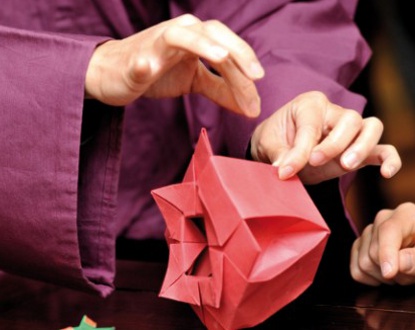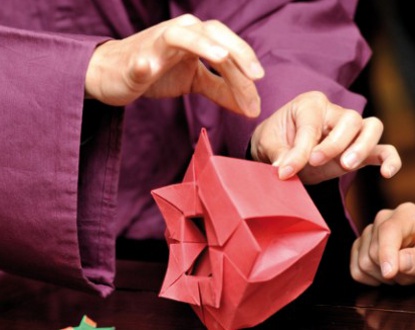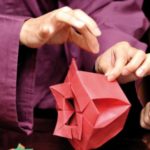Throughout the month of May, artists from the Asian Art Museum are offering workshops to engage in patience and application through origami, Chinese or Japanese calligraphy, and sumi e. These sessions take place on Wednesdays and Saturdays at 3 PM and are open to both children and adults.

Program
Origami, or the Art of Japanese Paper Folding by Keiko Yokoyama
Wednesday, May 4 and Saturday, May 2
The art of Japanese paper folding, a sign of good Japanese upbringing, has been passed down through many generations. Without glue or cutting, origami consists of hundreds of folding models, such as the three fundamentals: the crane (the most representative of Japanese aesthetics due to its delicacy), the frog (the most plastic), and the crab (the most elaborate). Alongside traditional models, contemporary creations are continually added.
Japanese Calligraphy, Shodo, by Keiko Yokoyama
Saturday, May 7 and Wednesday, May 18
Shodo, or the way of calligraphy, is a traditional Japanese art imbued with Zen spirituality. It is a reference discipline for masters of all traditional Japanese disciplines. Considered the most essential of all arts because it best reveals the artist’s spirit-heart, the goal of Japanese calligraphy is less to create a “beautiful work” than to commune with one’s own intuition.
Chinese Calligraphy, Shufa, by Lin Chi-Yi
Saturday, May 14 and Wednesday, May 25
Among all the arts, calligraphy, Shufa, holds a privileged position in China because ancient Chinese traditions attribute magical power to writing: writing is a possession of the universe that probes and unveils its secrets. Although this sacred character has gradually faded, calligraphy still constitutes a spiritual discipline. Thus, as a means of expression, calligraphy aims to bring the practitioner the fulfillment of an inner experience, whose ultimate goal is self-perfection and the creation, through art, of communion with the universe.



